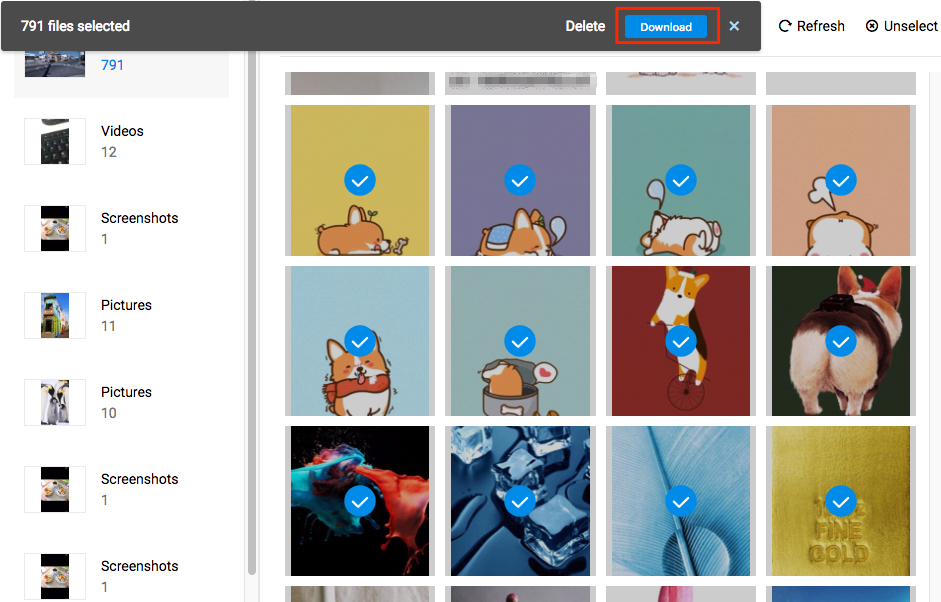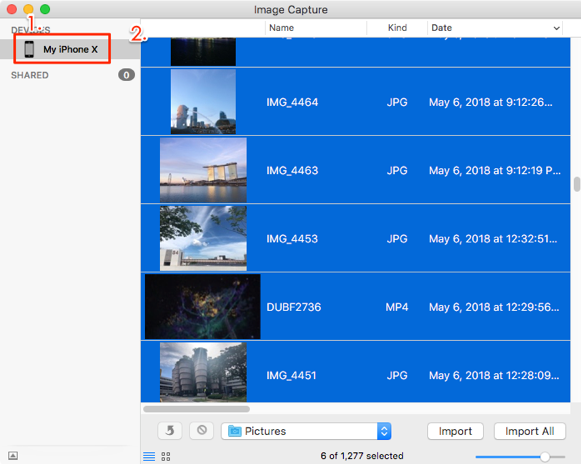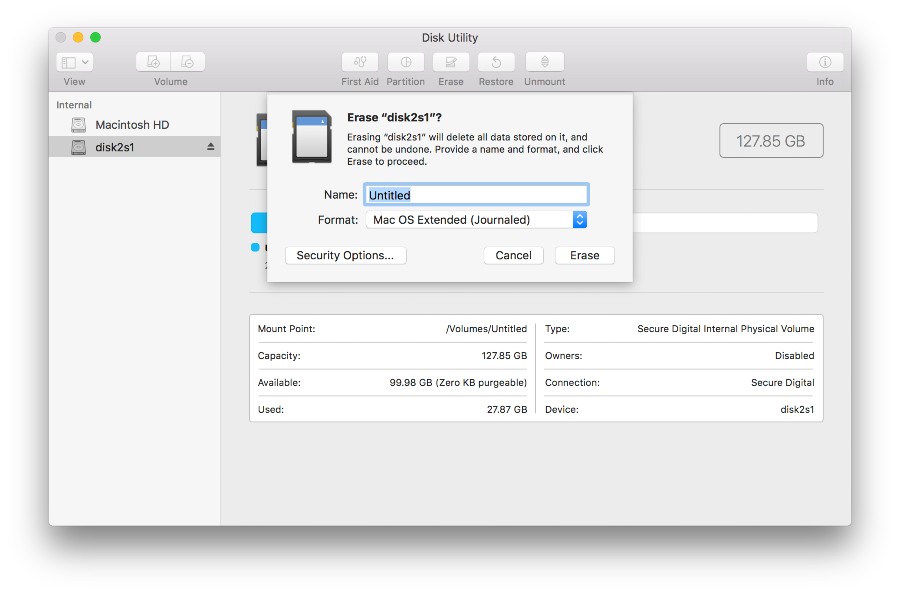Double-click the Disk Utility icon to open the application. Select your flash drive from the menu on the right, then click the 'Erase' tab; you will have to erase the contents of your drive to reformat it. Select 'MS-DOS (FAT)' if you want your flash drive to be compatible with both Windows and Mac, as well as other devices including video game.
If you need your files to be stored somewhere outside of your Windows 10 computer for safekeeping, a flash drive is a good option. Follow these simple steps to copy files to or from a flash drive:
- Use the 'Shift' key to select multiple photos in a row or the 'Command' key to select multiple nonconsecutive photos. For folders, you can click to select the entire folder. Step 5 Click your selected folder or photos and, still holding your mouse, drag them to the Finder window with your USB flash drive.
- On a Mac with Apple silicon: Press and hold the power button until you see “Loading startup options.” If you’re using a Mac Mini, wait for the system indicator light to turn amber. When you see the available startup disks, select one, then click the Up arrow (on Mac) or Continue button (on Mac with Apple silicon.).
- That’s enough to transfer small files in seconds (if you’re working with a data-rich medium – like video or audio – we’d recommend getting a beefier flash drive). Another reason we like this flash drive is the solid metal housing and integrated key loop. It also has a five-year warranty, so no need to worry about damaging it.
- Insert the flash drive into one of your computer’s USB ports.
Laptops, like cameras, often have a slot for a memory card. Want to turn your memory card into a flash drive? Simply buy a device called a dedicated or single-purpose memory card reader. Strictly speaking, a multipurpose card reader also works, but multicard readers cost more and are often larger than single-card readers. In addition, a dedicated memory card reader doesn’t need a cable to connect a camera to a computer. You can just download your pictures to your hard drive from the card.
- If Windows 10 displays a notification when you insert the flash drive or memory card, select Open Folder to View Files, which will open File Explorer on the desktop. If File Explorer doesn’t open automatically, go to the desktop and then select the yellow folder icon in the taskbar to open File Explorer.
- In File Explorer, navigate on the left to the folder that contains the files you want to copy. Select the folder.
- On the right side of File Explorer, select the folder or file you want to copy.If you see a check box to the left of each object you want to copy, you can select each check box to copy multiple files simultaneously.
To select every object on the right simultaneously, use the Select All button on the Home tab. You can also select the files you don’t want to copy and then use the Invert Selection button on the Home tab; deselected files become selected and vice versa. You can select files in other ways as well.
- The keyboard shortcut to select all files in File Explorer is Ctrl + A.
- In the Ribbon, select the Home tab and then select the Copy To button. Select Choose Location from the menu that appears.
You can move files if you want them gone from their original location. To do so, select the Move To button. Follow the remaining steps, but substitute the word Move for Copy.
- In the Copy Items window, under the This PC heading, locate the flash drive or memory card.The drive will not be Local Disk (C:), where Windows 10 resides. Select the removable flash drive or memory card to which you want to copy the files and then select the Copy button. If the files copy quickly, you may not see any indication of progress; otherwise, a progress bar is displayed until copying is complete.
If you select your user name in the Copy Items dialog box, you may see OneDrive listed in the expanded list. Files you copy to OneDrive are automatically copied to the cloud and to linked computers.
- If you copy a file that is already on the destination disk, the Replace or Skip Files window appears. (Perhaps you’re copying a newer version of a file you copied before.) Note the available options:
- Replace the File in the Destination: Selecting this option replaces one file with another. Be certain that you don’t need the replaced file (as you might if you want to keep different versions of files).
- Skip This File: Selecting this option does nothing with this file.
- Compare Info for Both Files: Selecting this option opens another window in which you can select files on the left to replace those on the right, and select files on the right to keep. Selecting the same file on the left and right creates a second file with a number added to the name, such as myfile (2). This option enables you to have the original and the new file.
- Select one of the previous options. If you selected Compare Info for Both Files, select the files to replace or skip, and then select the Continue button.You may or may not see a progress indicator, depending on how quickly the files are copied.
- Confirm that the copy worked by navigating on the left to the location you selected as the destination in Step 6.If the files are there, congratulations; you’re done. If not, try Steps 4 through 6 again.
- Remove the flash drive or memory card you inserted in Step 1. You’re good to go.
If you have files or folders that you’d be devastated to lose, follow the steps in this task to create backup copies of those items on a portable storage device. Then keep that device in a safe place.
To copy files from a flash drive or memory card, follow these same steps but select the flash drive in Step 3 and the folder or other destination to which you want to copy or move files in Step 6.
Oct 16, 2020 • Filed to: Solve Mac Problems • Proven solutions

For many years, users of Macs have been looking for the best tutorial to make sure that the use of USB drives on a Mac is not only explored, but it is also done well, and that the best. To help users make the best use of the system tools, this article has met the demands and needs of Mac users and increase general awareness.
Numerous advanced tips can be used to make sure that the user gets the best results when it comes to USB usage on a Mac. This tutorial will discuss the top 7 tips for using a flash drive. It will also provide a basic level of training to make the overall use of flash drive easier for Mac users.
1 Connecting Flash Drive to MAC
This is the first step that a user will take. Connecting USB to Mac is a simple process. Connecting to the Mac leads to the recognition of the device which can then be used for file transfer and sharing. USB ports are on all Macs and the user should connect the USB flash drive as seen in the picture below:
2 Formatting Flash Drive on Mac
This process is as follows:

a. Press CMD + Spacebar keys, then type application to access the application folder. Select Disk Utility.
b. Select the USB drive that is to be formatted from the left panel. Press the Erase button.

c. Press the Erase button again to confirm the process has been finished.
3 Scanning for Virus on USB Flash Drive on Mac
This is also one of the functions that should be carried out to ensure that the system is never affected and the USB drive's data is also protected properly. The USB device should be right-clicked once the ClamXav has been installed, which is the best antivirus software program. Please select the scan option to complete the process.
4 Opening Flash Drive on Mac
This is also one of the simplest processes that can be carried out. It should be noted that a user should first scan the drive for viruses so that the malware and viruses never affect the system. The finder that is built on Mac can open USB drives. The left panel shows all the connected drives and once the desired one has been clicked, the contents are shown in the right panel.
5 Transferring File from MAC to Flash Drive
Users can use flash drive on Mac in a simple way. Please scan the files that are being transferred to avoid virus attacks. The flash drive appears on the desktop of the Mac as soon as connected and the files can be dragged to finish the process.
6 Making Backup of Your Flash Drive on Mac
Users can right-click the flash drive and select the duplicate option to backup data on Mac easily.
7 Recovering Files from Flash Drive on Mac
By using the Recoverit for Mac, the process is also very easy as below:
Recoverit for Mac can help you perform 'All-Around Recovery' once you launch Recoverit. Follow the next simple steps to perform flash drive data recovery on Mac.
Step 1: Select your flash drive on the section 'External removable device' to start scanning your data.
Step 2: A scanning process will run immediately. You can preview the files to make sure the files that you need are found.
How To Select Different Photos For Transfer To Flash Drive On Mac Os
Step 3. Select the required files and click the Recover button to finish the process.
How To Select Different Photos For Transfer To Flash Drive On Mac On Microsoft
What's Wrong with Mac
How To Select Different Photos For Transfer To Flash Drive On Macbook Pro
- Recover Your Mac
- Fix Your Mac
- Delete Your Mac
- Learn Mac Hacks
